Technology
Tiny nuclear-powered battery could work for decades in space or at sea
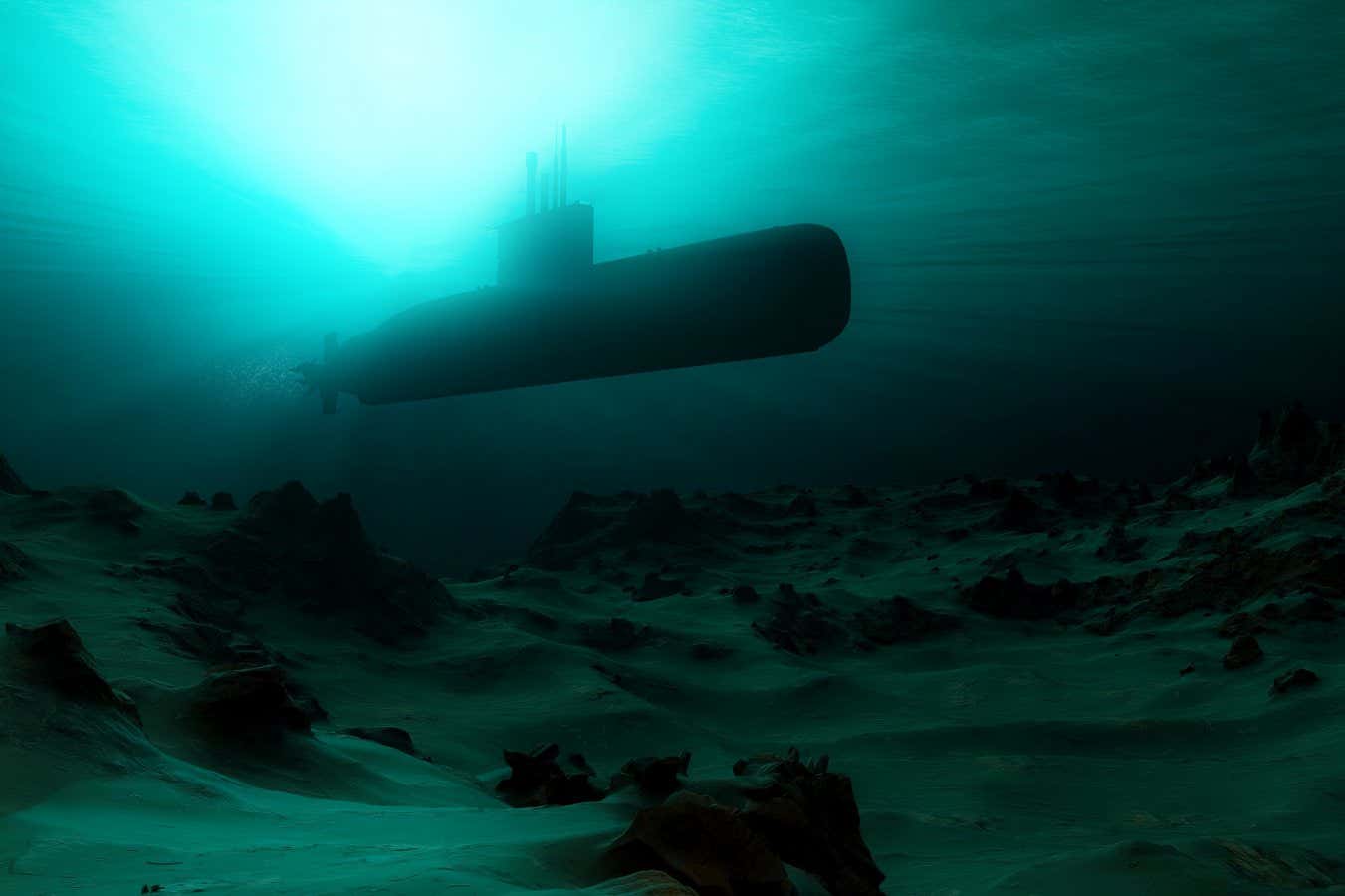

Long-lasting nuclear batteries could provide power on remote missions like deep-sea exploration
EB Adventure Photography/Shutterstock
A nuclear battery powered by radioactive decay rather than chemical reactions could last for decades. The most efficient design yet may bring this concept closer to reality.
Researchers have wanted to use radioactive atoms to build exceptionally long-lasting and damage-resistant batteries since the 1900s. While some prototypes have been assembled and even used in space missions, they were not very efficient. Now Shuao Wang at Soochow University in China and his colleagues have improved the efficiency of a nuclear battery design by a factor of 8000.
They started with a small sample of the element americium, which is usually considered to be nuclear waste. It radiates energy in the form of alpha particles, which carry lots of energy but quickly lose it to their surroundings. So the researchers embedded americium into a polymer crystal that converted this energy into a sustained and stable green glow.
Then they combined the glowing americium-doped crystal with a thin photovoltaic cell, a device that converts light to electricity. Finally, they packaged the tiny nuclear battery into a millimetre-sized quartz cell.
Over 200 hours of testing, Wang says, the device produced a stable supply of electricity at a relatively high energy with unprecedented efficiency – and it only needed minimal amounts of radioactive material to function. Although americium has a half-life of 7380 years, the nuclear battery should run for several decades, because the components surrounding the sample will eventually be destroyed by the radiation.

The glowing americium-doped crystal with a light source (top) and in a dark environment (bottom)
Kai Li et al.
Michael Spencer at Morgan State University in Maryland says the new battery has “much improved overall conversion efficiencies and output power” compared to past designs. However, it still produces much less power than conventional devices. It would take 40 billion of them to power a 60-watt light bulb, for instance.
The researchers are already working on improving their design’s efficiency and power output. They also want to make it easier and safer to use, since it contains possibly dangerous radioactive materials.
“Ideally, we envision our micronuclear battery being used to power miniature sensors in remote or challenging environments where traditional power sources are impractical, like deep-sea exploration, space missions or remote monitoring stations,” says Wang.
Topics:
Science & Environment
SpaceX launches 21 Starlink satellites, but rocket’s first stage crashes on landing barge
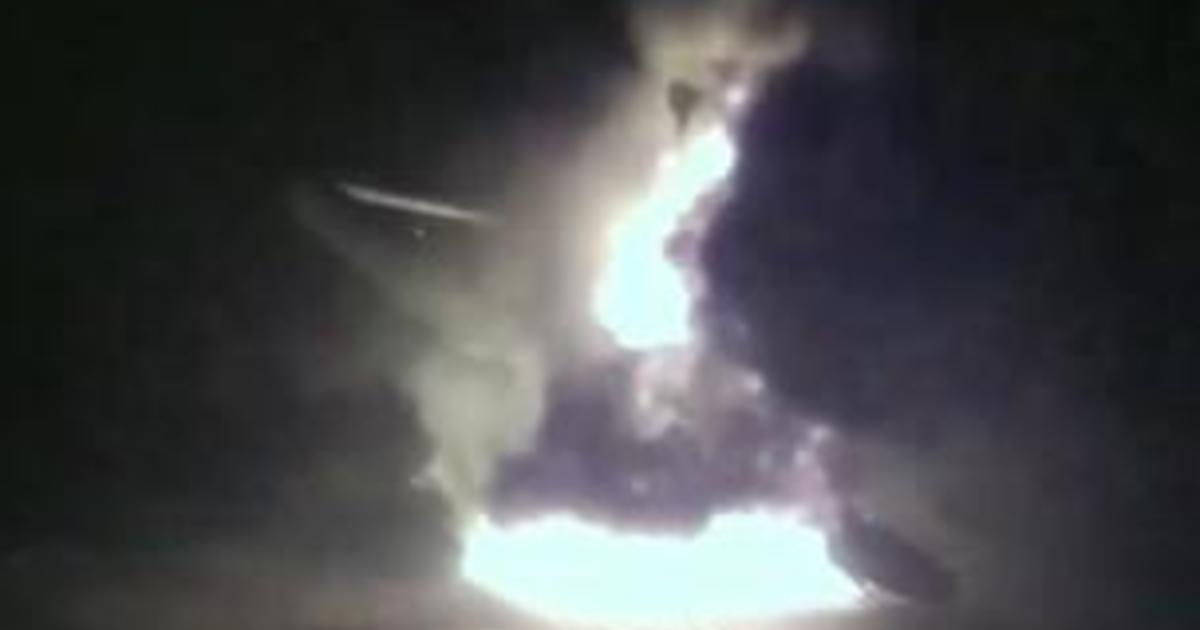
After standing down from the piloted Polaris Dawn launch late Tuesday, SpaceX shifted gears and pressed ahead with plans for back-to-back launches of Starlink internet satellites early Wednesday, one from Florida and the other from California.
But the second flight was called off after the first stage used in the Florida launch toppled into the Atlantic Ocean and broke apart while attempting to land on a SpaceX droneship stationed several hundred miles northeast of Cape Canaveral. The landing mishap ended a string of 267 successful booster recoveries dating back to February 2021.
The Falcon 9’s second stage, meanwhile, successfully carried 21 Starlink satellites to their planned orbit.
The first stage landing appeared normal until the moment of touchdown when more flames than usual were visible around the base of the rocket as it neared the deck. A landing leg immediately collapsed on touchdown and the booster, obscured by fire and smoke, tipped over the side of the landing barge into the Atlantic.
“After a successful ascent, Falcon 9’s first stage booster tipped over following touchdown on the A Shortfall of Gravitas droneship,” SpaceX said on the social media site X. “Teams are assessing the booster’s flight data and status.”
It was first stage B1062’s 23rd and what turned out to be final launch and landing, a new reuse record. SpaceX is working toward certifying its Falcon 9 first stages for up to 40 flights each.
Shortly after the Starlinks launched from Florida were deployed, SpaxeX called off the California launch, planned for 5:58 a.m. EDT, to give engineers more time to review telemetry and video footage, on the lookout for any signs of trouble that could affect other rockets.
“Standing down from our second @Starlink launch of the night to give the team time to review booster landing data from the previous launch,” SpaceX said on X. “A new target launch date will be shared once available.”
Here are updated Falcon 9 stats through through this morning’s Florida launch:
Total Falcon 9 launches to date: 367
Total Falcon Heavy launches to date: 10
Total Super Heavy/Starship launches to date: 4
Falcon 9/Heavy launches this year: 83 (82 F9s, 1 FH)
In-flight Falcon 9/Heavy failures: 2 (06/28/15, 07/11/24)
Successful Falcon 9/Heavy launches in a row: 13
Most successful flights in a row: 344 (between 6/28/15 and 07/11/24)
Starlink launches to date: 190 (181 dedicated flights, 9 mixed payloads)
Starlink launches this year: 58
Starlink satellites launched to date: 6,920
Starlinks with direct-to-cell capability: 136
Starlinks presumed to be working going into latest launch: 6,269*
Payloads launched to orbit this year by SpaceX: 1,548
First stage fleet leader: B1062, 23 flights (booster lost on landing)
California landings to date: 20
Florida landings to date: 54
Droneship landings to date: 267 (not counting today’s flight)
Successful booster landings overall: 341
Successful booster landings in a row: 267 (before today’s flight)
*Source: https://planet4589.org/space/con/star/stats.html
Technology
4 Pillars to Creating Effective AI Prompts

In the exciting world of Artificial Intelligence (AI), prompts are instructions or queries you enter into the AI interface to get responses. If you want helpful responses, you need to know how to input useful information and instructions. Known as AI prompt engineering, it’s a strategy that focuses on designing strategic prompts to guide machine learning models (MLMs) and large language models (LLMs) toward the desired output. Instead of just a question, well-thought-out prompts act like soft programming, resulting in specific responses with enhanced accuracy and value.
This is a good time to clarify something. A prompt is not the same as a ‘search.’ Search is when you look for information on a particular topic using keywords and get a list of results that more or less match the query. As noted above, AI prompt engineering is direct and leads to a specific response.
Whether you’re new to prompt writing or looking for quick tips on how to write effective AI prompts, we’re sharing our four tried-and-tested pillars to creating AI prompts (*pro tip: bookmark this article or print this simplified version to keep on your desk!). While these pillars are specifically designed to improve the quality of response when using Mintel Leap—our new, closed-loop generative AI tool—they absolutely apply no matter what gen AI tool you happen to be using.
Four pillars to creating AI prompts
The best AI prompts start with a good question, but it’s so much more than that.
- Category: What category/industry are you searching? CPG? Beauty? Financial Services?
- Market: Are you looking into a specific country or region?
- Audience: Who are you targeting? Gen Z? Families? Over 65?
- Time Frame: Are you looking at the last 5 years? Next 3 years?
Using the direction of the four pillars above, let’s explore an example of creating effective AI prompts:
“What are the key trends driving younger consumer preference in the housecleaning category in the US market over the next five years?”
Polishing your prompt writing skills
Let’s explore how the four pillars provide direction across a handful of sectors and teams, including an insights team at an advertising agency, a marketing team in the financial services sector, and an innovation team in the food and drink industry.
Prompt building for an Agency Insights team
A strategist at an agency wants to market a new RTD coffee to Gen Z in the US:
- Initial question: What are current and future RTD coffee trends in the US?
- In the form of a prompt: Tell me the current and future RTD coffee trends aimed at Gen Z in the US.
- Applying the four pillars: What are the current and future RTD coffee trends aimed at Gen Z in the US? Based on this information, build me a step-by-step strategy to market our new RTD coffee to Gen Z.
Prompt building for a Financial Services Marketing team
A major bank in the UK wants to grow its customer count, focusing especially on higher-income Millennials:
- Initial question: How can brands resonate with Millennials?
- In the form of a prompt: I want to grow my banking customer count by focusing on higher-income Millennials in the UK. How can I resonate with Millennials’ financial ambitions and position the brand as a tool for financial growth or wealth building?
- Applying the four pillars: I want to grow my banking customer count by focusing on higher-income Millennials in the UK. How can brand messaging resonate with their financial ambitions and position the brand as a tool for financial growth or wealth building? Based on this, create a list of actions to take from most important to least important.
Prompt building for a Food and Drink Innovation team
A yogurt innovation team is in charge of developing a new product targeted at seniors in Japan. They want to gather as much information as possible to create the most appealing product.
- Initial question: What yogurts appeal to seniors?
- In the form of a prompt: I want to create a yogurt targeted at seniors. What should I do?
- Applying the four pillars: I want to create a yogurt targeted at seniors in Japan. First, tell me what I should focus on. Then, based on this, come up with the three best yogurt concepts.
How to handle AI prompt issues
The biggest issue most of us face with generative AI is providing clear instructions. While it is important to provide context, conciseness is equally crucial. Verbose prompts can confuse the AI or lead it to focus on less relevant aspects of your prompt. You may need to refine your prompt and build on the analysis with additional prompts as you go along. From the start, aim for a balance by providing enough detail for clarity and context, but be as concise as possible.
Marketing, Research, and Innovation prompts from Mintel Leap users
Mintel Leap is designed to transform hours of research into answers in seconds. It’s a tool you can trust, as it only analyzes Mintel’s proprietary research and human analysis (based on the client’s subscription).
For a better understanding, check out this on-demand demo.
As you can imagine, Mintel Leap has developed quite a fanbase—both among our clients and Mintel employees. If you called us ‘obsessed,’ you wouldn’t be too far off. Because of this enthusiastic following, we’ve compiled (and generalized) some of the top prompts used with Leap. Find one (or many!) you like, apply the four pillars to make them specific to your needs, and watch the magic happen.
We recommend booking a personalized demo to put your prompts to the test and experience the incredible power of Mintel Leap!
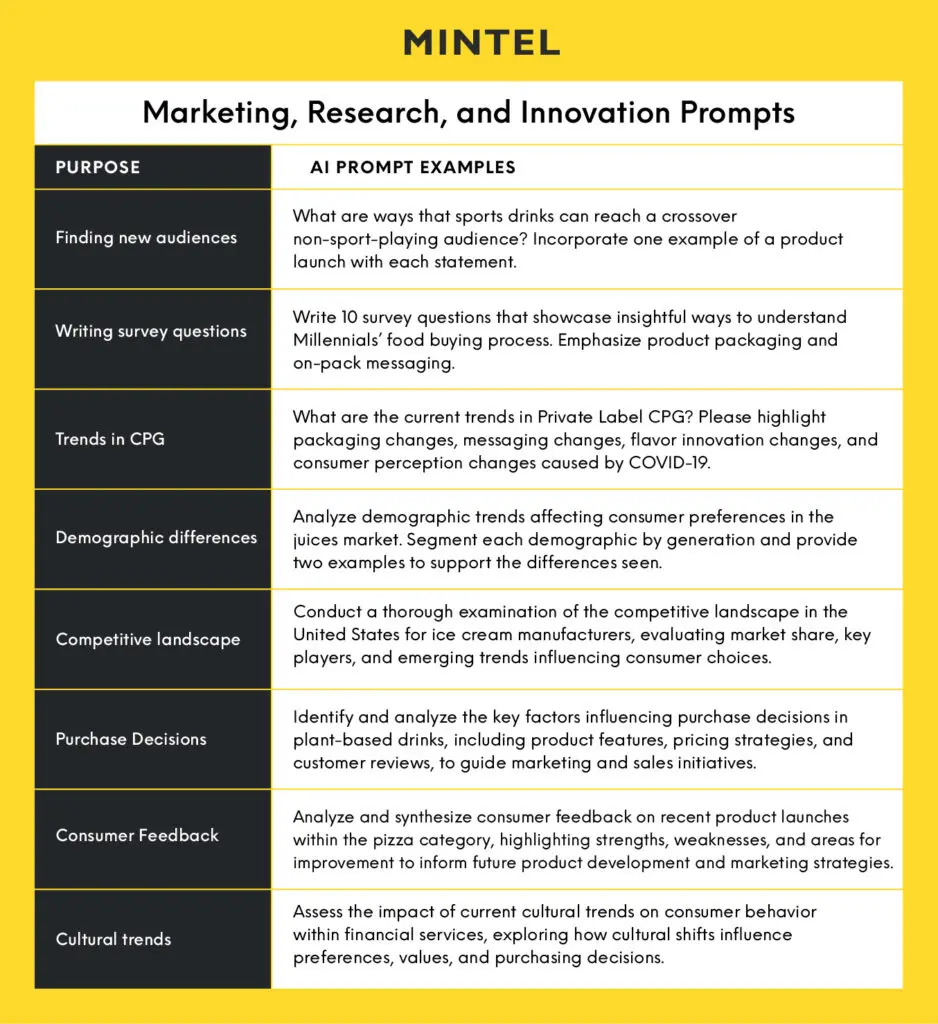
Stuck for inspiration? Ask AI for tips on writing the best AI prompt
AI prompt engineering tailors generative model responses for relevance, clarity, and depth. Once you know how to write the best AI prompts, you’ll be able to achieve more accurate outputs more quickly.
As the technology continues to evolve, careful prompt creation will only become more important in enhancing outputs. The four pillars and example prompts shared here are meant to inspire you to write your own prompts relevant to your business. Happy prompt writing, and remember, if you’re drawing a blank, just ask the AI what questions you should be asking.
Science & Environment
FAA grounds SpaceX Falcon 9 rockets pending investigation of rare offshore crash-landing
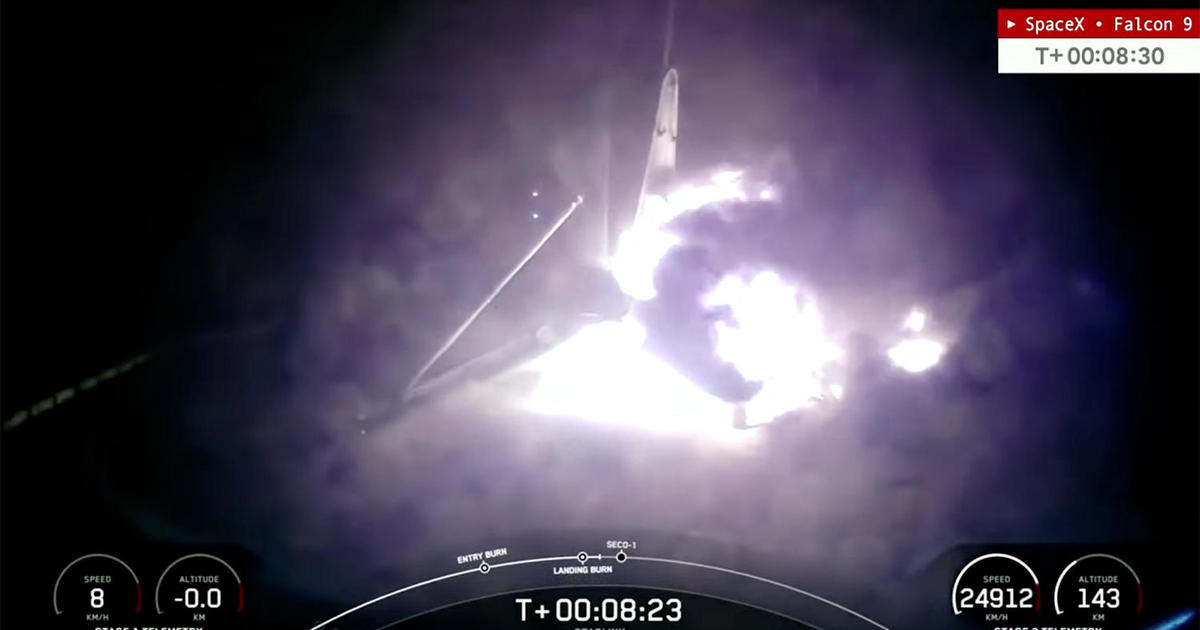
The Federal Aviation Administration has grounded SpaceX’s Falcon 9 rockets pending an investigation to determine what caused a first-stage booster to crash onto a landing barge early Wednesday after helping launch another batch of Starlink internet satellites.
After standing down from the piloted Polaris Dawn launch late Tuesday because of an unfavorable long-range forecast, SpaceX pressed ahead with the first of two planned back-to-back launches of Starlinks, one from Florida and the other from California.
But the second flight was called off after the first stage used in the Florida launch crash-landed and toppled into the Atlantic Ocean while attempting to touch down on a SpaceX droneship stationed several hundred miles northeast of Cape Canaveral.
The FAA said it would require an investigation, effectively grounding SpaceX’s Falcon 9 rockets — including the Polaris Dawn booster — until the probe is complete and corrective actions are approved.
“A return to flight of the Falcon 9 booster rocket is based on the FAA determining that any system, process or procedure related to the anomaly does not affect public safety,” the FAA said in a statement.
“In addition, SpaceX may need to request and receive approval from the FAA to modify its license that incorporates any corrective actions and meet all other licensing requirements,” the agency said.
Late Tuesday, SpaceX delayed Wednesday’s planned launch of the Polaris Dawn mission, a commercial flight featuring what will be the first non-government spacewalk, to Friday at the earliest because of predicted end-of-mission splashdown weather. The launching now is on indefinite hold pending the landing mishap investigation.
The landing failure ended a string of 267 successful booster recoveries in a row dating back to February 2021. The Falcon 9’s second stage, however, successfully carried 21 Starlink internet satellites to their planned orbit.
The first stage landing appeared normal until the moment of touchdown when more flames than usual were visible around the base of the rocket as it neared the deck. A landing leg immediately collapsed on touchdown and the booster, obscured by fire and smoke, tipped over the side of the landing barge into the Atlantic Ocean.
“After a successful ascent, Falcon 9’s first stage booster tipped over following touchdown on the A Shortfall of Gravitas droneship,” SpaceX said on social media. “Teams are assessing the booster’s flight data and status.”
It was first stage B1062’s 23rd and what turned out to be its final launch and landing, a new reuse record. SpaceX is working toward certifying its Falcon 9 first stages for up to 40 flights each.
Shortly after the Florida Starlinks were deployed, the company called off the California launch, planned for 5:58 a.m. EDT, to give engineers more time to review telemetry and video footage, on the lookout for any signs of trouble that could affect other rockets.
“Standing down from our second @Starlink launch of the night to give the team time to review booster landing data from the previous launch,” SpaceX said. “A new target launch date will be shared once available.”
Technology
The Mac Mini with M2 chip is on sale at Best Buy today


While many Apple deals focus on iPads or MacBooks, one of the unsung heroes in the Apple arsenal is the Apple Mac mini M2. Right now, you can buy it from Best Buy for $100 off, so it’s now $499 instead of $599. A fantastic option for someone who wants all the benefits of macOS without needing a laptop, it’s small enough to fit into pretty much any working environment even if you have a small apartment. Here’s what it has to offer for the exceptionally smart price.
Why you should buy the Apple Mac mini M2
If you’ve been reading through our Mac mini M2 buying guide, you’ll appreciate that whether to go Mac mini or MacBook can be a tough decision. That’s why we spent some time laying out why you should buy a Mac mini instead of a MacBook Air. On a simple level, the Mac mini is cheaper, supports more external displays, and has more ports.
This particular model of the Apple Mac mini M2 has an 8-core CPU and 10-core GPU. It also sports 8GB of memory and 256GB of SSD storage. That’s fairly basic stuff, but macOS runs efficiently so it doesn’t need too much memory or storage space to still run well. We reviewed the Mac mini M2 Pro and called it “the best mini computer ever,” with the standard Mac mini M2 still proving pretty potent.
This model supports two displays while having an advanced cooling system which ensures the best performance you can get out of this processor. It also has Wi-Fi 6E support, two Thunderbolt 4 ports, one HDMI, two USB-A, a headphone jack, and Ethernet port. Despite packing so much in, the Apple Mac mini M2 only measures 7.7 inches, so it easily fits into your home. Just add one of the best monitors or connect it to your TV.
Normally $599, the Apple Mac mini M2 is down to $499 for a limited time only at Best Buy. The $100 discount makes it even more affordable and unmissable. Check it out now as the deal is likely to end soon, and it’s a chunky price cut of nearly 20%.
Science & Environment
It’s a shark eat shark world. Researchers find evidence that large sharks may be hunting each other.
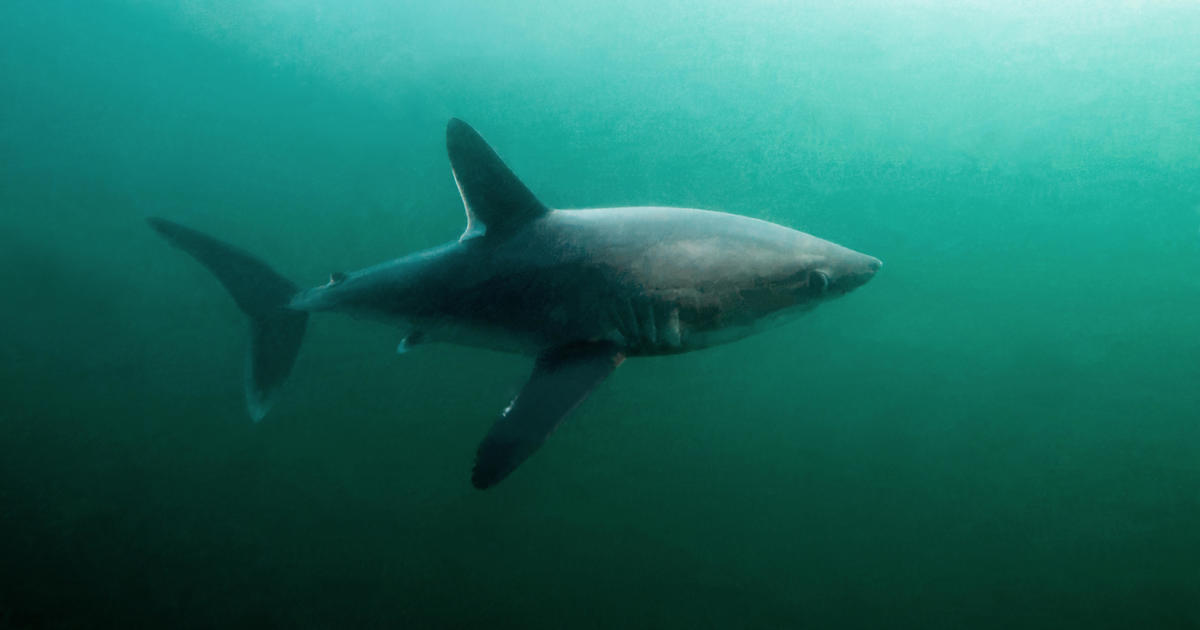
In the ocean food chain, large sharks generally only have to worry about keeping orcas at bay — but a new study suggests the apex predators may have to watch out for their own.
Researchers have discovered evidence pointing to the first known case of a porbeagle shark — which can grow up to 12 feet long and 500 pounds — being killed by a large shark predator. The findings were published Tuesday in the biology journal Frontiers in Marine Science.
This isn’t the first case of “shark cannibalism,” said Jon Dodd, executive director of the Atlantic Shark Institute, which helped lead the study. Larger sharks eating smaller sharks is a common occurrence, “in the open ocean, size matters, but there is always something bigger,” he said.
In some cases — bull sharks, mako sharks and baby sand tiger sharks, for example — sharks will even eat their own species.
But cases of large sharks eating other large sharks, the subject of this study, are few and far between, said lead author Dr. Brooke Anderson, a marine biologist for the North Carolina Department of Environmental Quality.
The fatality of the female porbeagle raises questions about whether this incident represents a wider trend among large predators, said Anderson. “With the advancements in technology, it’s possible that this happens more frequently than we’ve just really been able to discover,” said Anderson.
The number of sharks eaten by other sharks is impossible to know, said Dodd adding, “but if our experiences at the Atlantic Shark Institute are an indicator, it might be more than we think.”
A group of scientific researchers from across the U.S. discovered the porbeagle death while conducting a satellite tracking project in the Northwestern Atlantic to better understand the shark species’ whereabouts, behaviors and environmental preferences. They were particularly curious about female porbeagles, which are known to traverse long swaths of the ocean to deliver their pups.
“We were really seeking to understand the habitats used by the pregnant females and try to figure out where they might be going to give birth,” said Anderson.
The victim of the attack, nicknamed Penelope by researchers, was one of the 11 sharks scientists tagged off the coast of Cape Cod in 2020 and 2022. Tracking tags were placed on the dorsal fins of the sharks and used to collect information on water depth and temperature. The tags stored the data until they eventually fell off the sharks, at which point the data was transmitted back to the researchers via satellite.
The tracking devices were designed to stay on for a year, but five months into the experiment, Penelope’s data had already come in. “As soon as I got the data from that tag, I immediately knew something weird had happened,” Anderson said.
A few days before Penelope’s tag popped off along the coast of Bermuda, the temperature of the water suddenly spiked. It remained relatively high, even when it reached 600 meters below sea level, which is “very unusual,” Anderson explained.
Anderson and her colleagues came to a harrowing conclusion: the porbeagle had been hunted and eaten by another behemoth of the sea. “The only explanation for that data is that this tab is now in the stomach of a predator,” Anderson told CBS News.
Researchers don’t know with 100% certainty what the culprit was, but the diving pattern of the predator, which researchers tracked by looking at the depth data collected by the tag, was similar to that of white sharks they’ve monitored in the past. “Based on that, it was likely, I’d guess, a mature female white shark,” said Anderson.
Porbeagles, which have historically been overfished, are considered endangered in certain parts of the world. Given they are already at risk, Anderson said the loss of pregnant females and their babies could prove devastating to the population.
And sharks aren’t the only ones that could feel the ripple effects of this change. The rulers of the deep maintain the balance of the underwater ecosystem by keeping smaller predator populations in check and adding vital nutrients to shallow waters.
“Humans heavily rely on oceans for food and many other things and the oceans need healthy shark populations,” Anderson said.
Technology
The Star Wars Jedi series will end with the third and final game
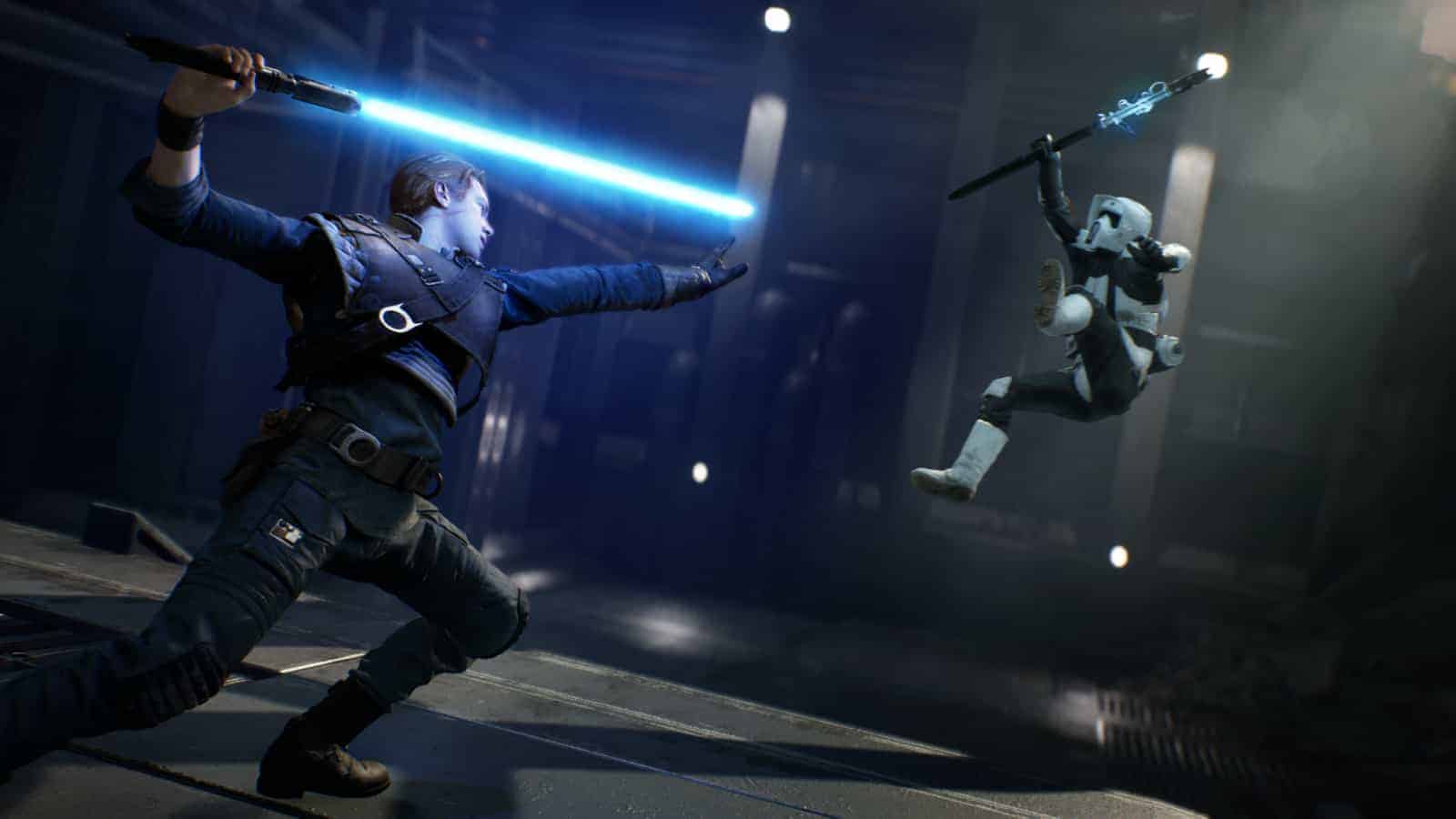
The Star Wars Jedi series has been pretty popular since it debuted back in 2019, and the coming installment of the third game is likely to show just as much promise as the first two games in the series. It’s also reportedly going to be the last game in the series, according to EA. The publishing company has confirmed that a third installment of Star Wars Jedi, said to be a sequel to Star Wars Jedi: Survivor is in the works.
EA has also confirmed that this third game will be the “final chapter” making this a trilogy. The first two games and the third installment in the series are all developed by Respawn Entertainment. The same development studio behind Titan Fall and Apex Legends.
While we don’t know how far along in development the game is, EA says that Respawn is already working on the game. The publishing company mentioned these details at its recent EA Investor Days conference. This took place on September 17 (via Insider Gaming and GameRant). Interestingly, EA’s conference was held on the same day Star Wars Jedi: Survivor was released for the PS4 and Xbox One. It was originally released for PC, PS5, and Xbox Series X|S back on April 28, 2023.
EA doesn’t mention any specifics about the third Star Wars Jedi game
With EA confirming a third game is in development, fans no doubt want to know everything they can about the game. When it’s coming, what the story will be, what new features will be included. All of that will no doubt come in time, but EA hasn’t shared any of those details as of yet. Nothing other than the fact that the game is in development was mentioned during the investor conference. The only thing that is probably safe to assume is that the series’ main character, Cal Kestis, will return to be the main playable character in the final game.
Will this new game come to PS4 and Xbox One as well?
It’s tough to say. It can’t be confirmed what platforms the game will be released on. Especially with EA sharing absolutely nothing about the game at this time. Since Jedi Survivor was released on PS4 and Xbox One, it’s certainly possible.
How likely it is will be another story. Even if it is released on PS4 and Xbox One, that may not happen right away. It could end up being more than a year after PC and current-gen consoles just like with Jedi Survivor. That’s even if the game releases this gen in the first place.
-

 Sport5 hours ago
Sport5 hours agoJoshua vs Dubois: Chris Eubank Jr says ‘AJ’ could beat Tyson Fury and any other heavyweight in the world
-

 News1 day ago
News1 day agoYou’re a Hypocrite, And So Am I
-

 Technology4 hours ago
Technology4 hours agoiPhone 15 Pro Max Camera Review: Depth and Reach
-

 News6 hours ago
News6 hours agoIsrael strikes Lebanese targets as Hizbollah chief warns of ‘red lines’ crossed
-

 CryptoCurrency4 hours ago
CryptoCurrency4 hours agoEthereum is a 'contrarian bet' into 2025, says Bitwise exec
-

 CryptoCurrency5 hours ago
CryptoCurrency5 hours ago2 auditors miss $27M Penpie flaw, Pythia’s ‘claim rewards’ bug: Crypto-Sec
-

 CryptoCurrency5 hours ago
CryptoCurrency5 hours agoTreason in Taiwan paid in Tether, East’s crypto exchange resurgence: Asia Express
-

 CryptoCurrency5 hours ago
CryptoCurrency5 hours agoLeaked Chainalysis video suggests Monero transactions may be traceable
-

 CryptoCurrency5 hours ago
CryptoCurrency5 hours agoJourneys: Robby Yung on Animoca’s Web3 investments, TON and the Mocaverse
-

 CryptoCurrency5 hours ago
CryptoCurrency5 hours agoAre there ‘too many’ blockchains for gaming? Sui’s randomness feature: Web3 Gamer
-

 CryptoCurrency5 hours ago
CryptoCurrency5 hours agoHelp! My parents are addicted to Pi Network crypto tapper
-

 CryptoCurrency5 hours ago
CryptoCurrency5 hours ago‘Everything feels like it’s going to shit’: Peter McCormack reveals new podcast
-

 CryptoCurrency5 hours ago
CryptoCurrency5 hours agoSEC sues ‘fake’ crypto exchanges in first action on pig butchering scams
-

 CryptoCurrency5 hours ago
CryptoCurrency5 hours agoDecentraland X account hacked, phishing scam targets MANA airdrop
-

 CryptoCurrency5 hours ago
CryptoCurrency5 hours agoBinance CEO says task force is working ‘across the clock’ to free exec in Nigeria
-

 CryptoCurrency5 hours ago
CryptoCurrency5 hours agoBitcoin price hits $62.6K as Fed 'crisis' move sparks US stocks warning
-

 CryptoCurrency5 hours ago
CryptoCurrency5 hours agoCZ and Binance face new lawsuit, RFK Jr suspends campaign, and more: Hodler’s Digest Aug. 18 – 24
-

 CryptoCurrency5 hours ago
CryptoCurrency5 hours agoBitcoin miners steamrolled after electricity thefts, exchange ‘closure’ scam: Asia Express
-

 CryptoCurrency5 hours ago
CryptoCurrency5 hours agoCertiK Ventures discloses $45M investment plan to boost Web3
-

 CryptoCurrency5 hours ago
CryptoCurrency5 hours agoMemecoins not the ‘right move’ for celebs, but DApps might be — Skale Labs CMO
-

 CryptoCurrency5 hours ago
CryptoCurrency5 hours agoDorsey’s ‘marketplace of algorithms’ could fix social media… so why hasn’t it?
-

 CryptoCurrency5 hours ago
CryptoCurrency5 hours agoLow users, sex predators kill Korean metaverses, 3AC sues Terra: Asia Express
-

 CryptoCurrency5 hours ago
CryptoCurrency5 hours agoSEC asks court for four months to produce documents for Coinbase
-

 CryptoCurrency5 hours ago
CryptoCurrency5 hours agoBlockdaemon mulls 2026 IPO: Report
-

 Science & Environment8 hours ago
Science & Environment8 hours ago‘Running of the bulls’ festival crowds move like charged particles
-

 Sport5 hours ago
Sport5 hours agoUFC Edmonton fight card revealed, including Brandon Moreno vs. Amir Albazi headliner
-

 MMA5 hours ago
MMA5 hours agoUFC’s Cory Sandhagen says Deiveson Figueiredo turned down fight offer
-

 MMA5 hours ago
MMA5 hours agoDiego Lopes declines Movsar Evloev’s request to step in at UFC 307
-

 Football5 hours ago
Football5 hours agoNiamh Charles: Chelsea defender has successful shoulder surgery
-

 Football5 hours ago
Football5 hours agoSlot's midfield tweak key to Liverpool victory in Milan
-

 Science & Environment8 hours ago
Science & Environment8 hours agoRethinking space and time could let us do away with dark matter
-

 Science & Environment8 hours ago
Science & Environment8 hours agoHow one theory ties together everything we know about the universe
-

 News3 hours ago
News3 hours agoBrian Tyree Henry on voicing young Megatron, his love for villain roles
-

 Science & Environment5 hours ago
Science & Environment5 hours agoWe may have spotted a parallel universe going backwards in time
-

 CryptoCurrency5 hours ago
CryptoCurrency5 hours agoArthur Hayes’ ‘sub $50K’ Bitcoin call, Mt. Gox CEO’s new exchange, and more: Hodler’s Digest, Sept. 1 – 7
-

 CryptoCurrency5 hours ago
CryptoCurrency5 hours agoLouisiana takes first crypto payment over Bitcoin Lightning
-

 CryptoCurrency5 hours ago
CryptoCurrency5 hours agoCrypto whales like Humpy are gaming DAO votes — but there are solutions
-

 CryptoCurrency5 hours ago
CryptoCurrency5 hours ago$12.1M fraud suspect with ‘new face’ arrested, crypto scam boiler rooms busted: Asia Express
-

 CryptoCurrency5 hours ago
CryptoCurrency5 hours agoReal-world asset tokenization is the crypto killer app — Polygon exec
-

 Science & Environment8 hours ago
Science & Environment8 hours agoFuture of fusion: How the UK’s JET reactor paved the way for ITER
-

 CryptoCurrency5 hours ago
CryptoCurrency5 hours agoFed rate cut may be politically motivated, will increase inflation: Arthur Hayes
-

 CryptoCurrency5 hours ago
CryptoCurrency5 hours agoCardano founder to meet Argentina president Javier Milei
-

 CryptoCurrency5 hours ago
CryptoCurrency5 hours agoTelegram bot Banana Gun’s users drained of over $1.9M
-

 CryptoCurrency5 hours ago
CryptoCurrency5 hours agoVonMises bought 60 CryptoPunks in a month before the price spiked: NFT Collector
-
Business4 hours ago
How Labour donor’s largesse tarnished government’s squeaky clean image
-
Business4 hours ago
UK hospitals with potentially dangerous concrete to be redeveloped
-
Business3 hours ago
Axel Springer top team close to making eight times their money in KKR deal
-

 News3 hours ago
News3 hours ago“Beast Games” contestants sue MrBeast’s production company over “chronic mistreatment”
-

 News3 hours ago
News3 hours agoSean “Diddy” Combs denied bail again in federal sex trafficking case
-

 News3 hours ago
News3 hours agoSean “Diddy” Combs denied bail again in federal sex trafficking case in New York
-

 News3 hours ago
News3 hours agoBrian Tyree Henry on his love for playing villains ahead of “Transformers One” release
-

 News3 hours ago
News3 hours agoBrian Tyree Henry on voicing young Megatron, his love for villain roles
-

 News7 hours ago
News7 hours agoPolice chief says Daniel Greenwood 'used rank to pursue junior officer'
-

 Technology3 days ago
Technology3 days agoYouTube restricts teenager access to fitness videos
-

 News7 hours ago
News7 hours agoChurch same-sex split affecting bishop appointments
-

 Science & Environment8 hours ago
Science & Environment8 hours agoPhysicists have worked out how to melt any material
-

 Politics19 hours ago
Politics19 hours agoWhat is the House of Lords, how does it work and how is it changing?
-

 Politics20 hours ago
Politics20 hours agoKeir Starmer facing flashpoints with the trade unions
-

 Technology6 hours ago
Technology6 hours agoFivetran targets data security by adding Hybrid Deployment
-
News5 hours ago
Freed Between the Lines: Banned Books Week
-

 Sport5 hours ago
Sport5 hours agoUFC’s Dan Ige feels confident after Diego Lopes dominates Brian Ortega
-

 MMA5 hours ago
MMA5 hours agoConor McGregor denies allegation he sexually assaulted woman at NBA Finals
-

 Science & Environment8 hours ago
Science & Environment8 hours agoHow to wrap your head around the most mind-bending theories of reality
-

 Fashion Models4 hours ago
Fashion Models4 hours agoMiranda Kerr nude
-

 Fashion Models4 hours ago
Fashion Models4 hours ago“Playmate of the Year” magazine covers of Playboy from 1971–1980
-
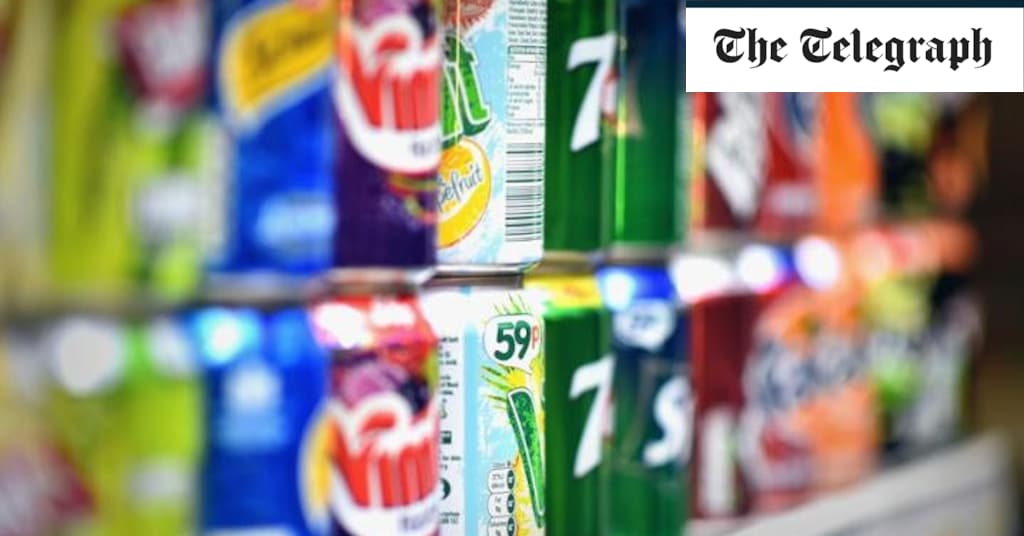
 Health & fitness1 day ago
Health & fitness1 day ago11 reasons why you should stop your fizzy drink habit in 2022
-

 Politics4 hours ago
Politics4 hours agoLabour MP urges UK government to nationalise Grangemouth refinery
-

 News4 days ago
News4 days agoIndia Now Moves from Deliberations to Deliverables on Crimes Against Women
-

 Science & Environment7 hours ago
Science & Environment7 hours agoOdd quantum property may let us chill things closer to absolute zero
-

 Science & Environment14 hours ago
Science & Environment14 hours agoQuantum forces used to automatically assemble tiny device
-

 Entertainment3 hours ago
Entertainment3 hours ago“Jimmy Carter 100” concert celebrates former president’s 100th birthday
-

 CryptoCurrency5 hours ago
CryptoCurrency5 hours agoSEC settles with Rari Capital over DeFi pools, unregistered broker activity
-

 Science & Environment16 hours ago
Science & Environment16 hours agoSunlight-trapping device can generate temperatures over 1000°C
-

 News3 hours ago
News3 hours agoJoe Posnanski revisits iconic football moments in new book, “Why We Love Football”
-

 Health & fitness2 days ago
Health & fitness2 days agoHow to adopt mindful drinking in 2022
-

 Health & fitness2 days ago
Health & fitness2 days agoWhen Britons need GoFundMe to pay for surgery, it’s clear the NHS backlog is a political time bomb
-

 Science & Environment18 hours ago
Science & Environment18 hours agoQuantum to cosmos: Why scale is vital to our understanding of reality
-
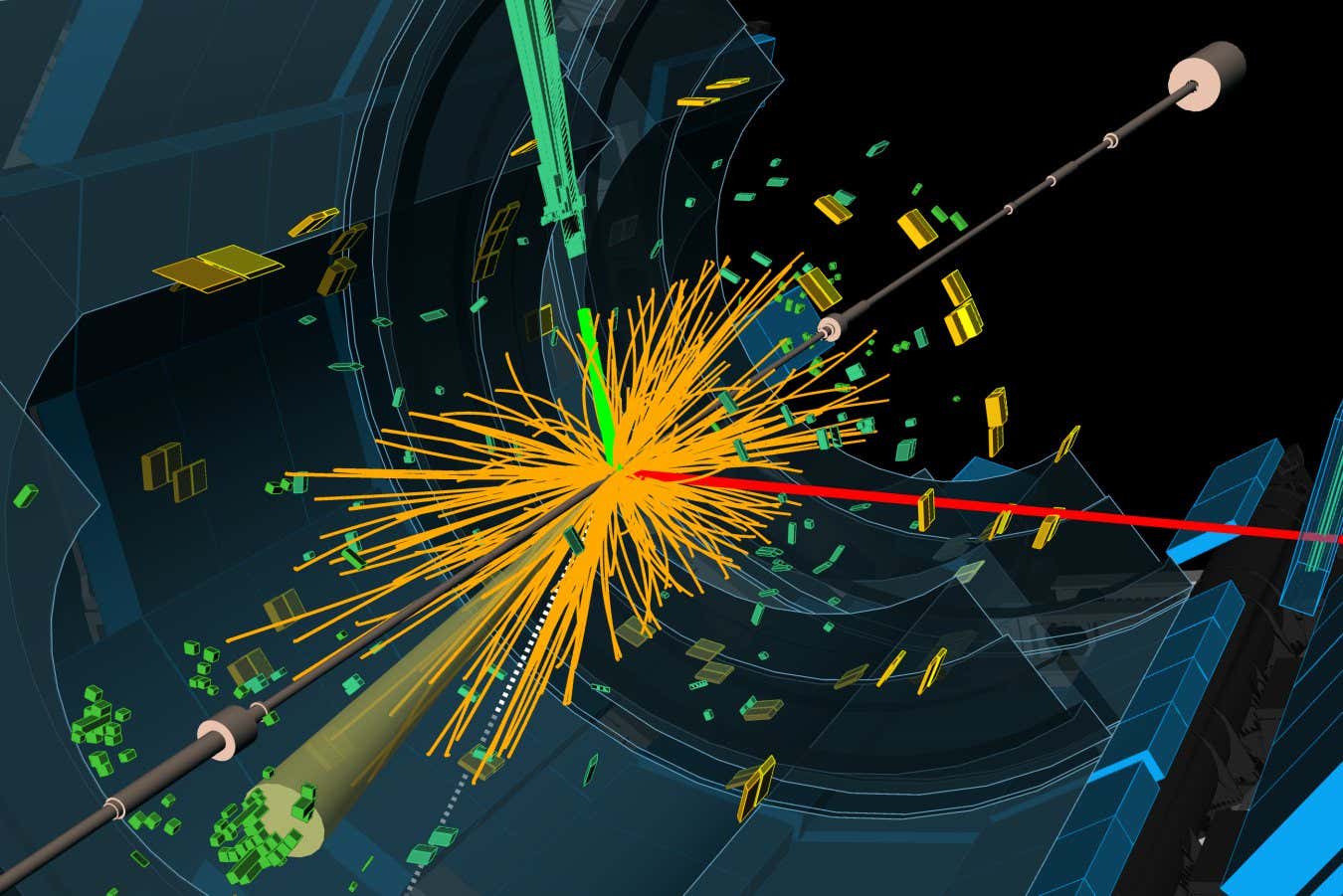
 Science & Environment1 day ago
Science & Environment1 day agoParticle physicists may have solved a strange mystery about the muon
-
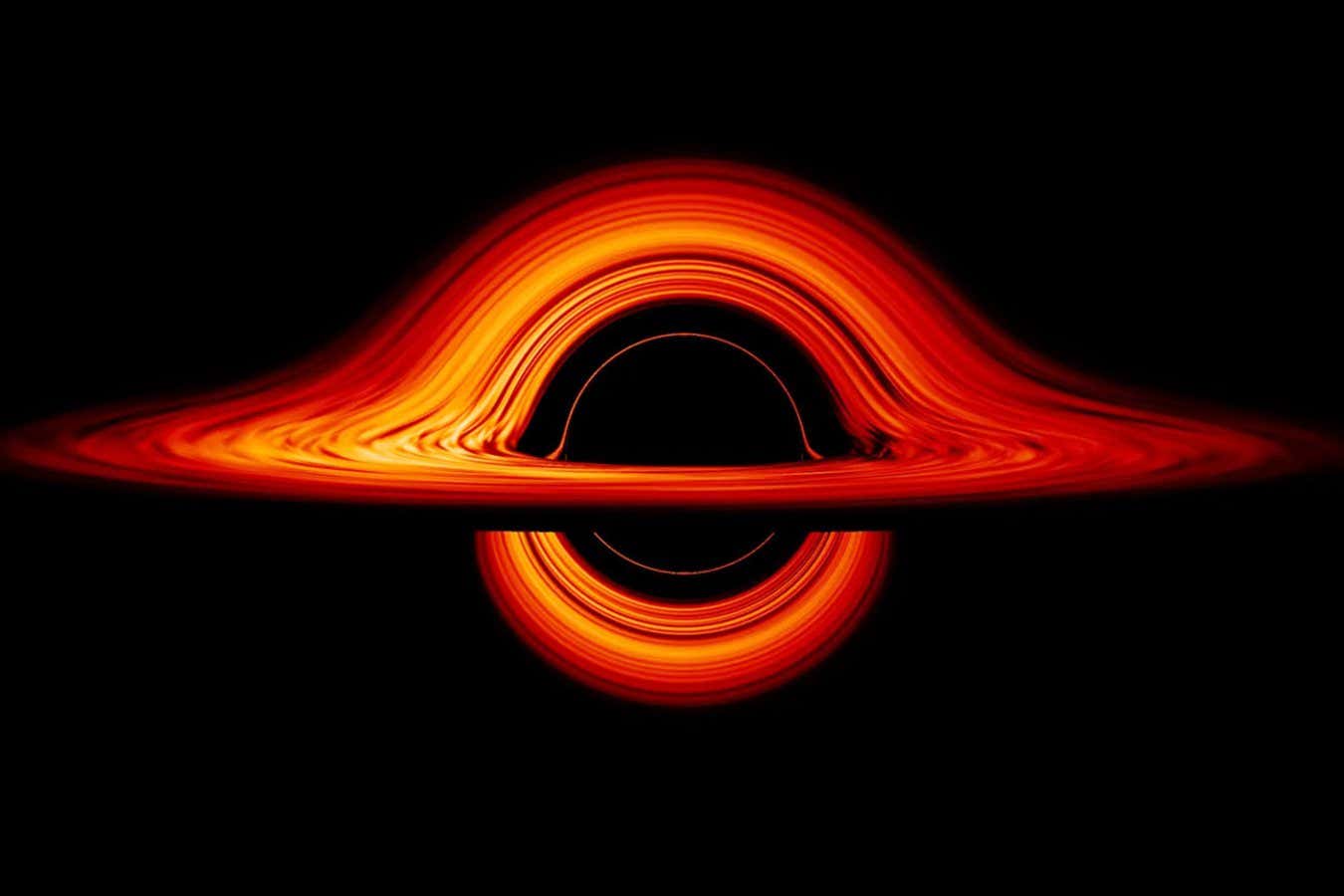
 Science & Environment19 hours ago
Science & Environment19 hours agoHow the weird and powerful pull of black holes made me a physicist
-

 Science & Environment19 hours ago
Science & Environment19 hours agoQuantum time travel: The experiment to ‘send a particle into the past’
-

 Science & Environment18 hours ago
Science & Environment18 hours agoX-ray laser fires most powerful pulse ever recorded
-

 Science & Environment16 hours ago
Science & Environment16 hours agoDoughnut-shaped swirls of laser light can be used to transmit images
-

 Science & Environment15 hours ago
Science & Environment15 hours agoBeing in two places at once could make a quantum battery charge faster
-
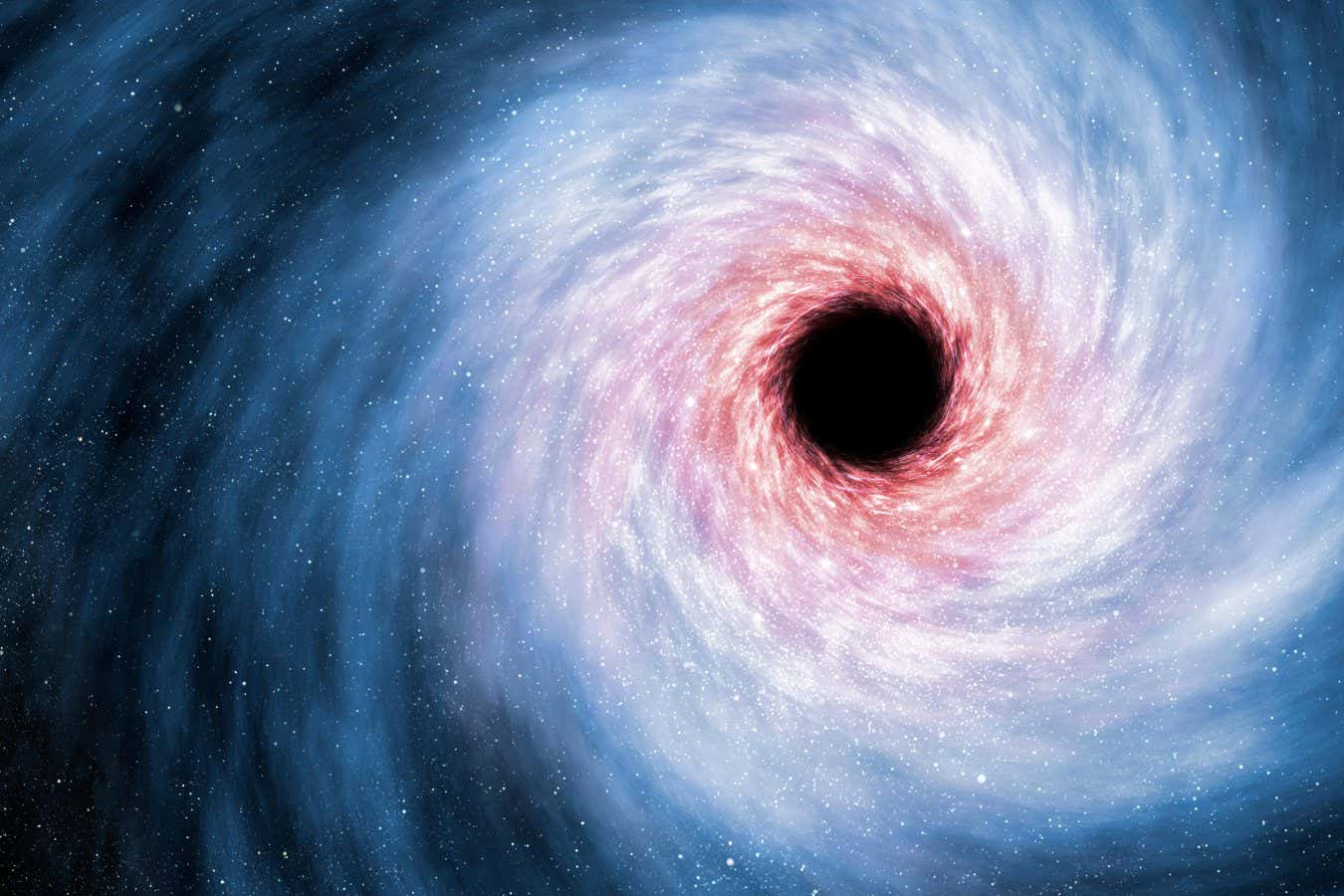
 Science & Environment14 hours ago
Science & Environment14 hours agoBlack holes scramble information – but may not be the best at it
-

 CryptoCurrency5 hours ago
CryptoCurrency5 hours agoBitcoin will ‘start ripping’ as Trump’s polls improve: Felix Hartmann, X Hall of Flame
-

 CryptoCurrency5 hours ago
CryptoCurrency5 hours agoFive crypto market predictions that haven’t come true — yet
-

 CryptoCurrency5 hours ago
CryptoCurrency5 hours agoCrypto scammers orchestrate massive hack on X but barely made $8K
-

 Science & Environment8 hours ago
Science & Environment8 hours ago‘Sound laser’ is the most powerful ever made
-

 Science & Environment8 hours ago
Science & Environment8 hours agoJupiter’s stormy surface replicated in lab
-

 Science & Environment8 hours ago
Science & Environment8 hours agoA tale of two mysteries: ghostly neutrinos and the proton decay puzzle
-
Politics8 hours ago
Owen Paterson loses ECHR appeal against report that preceded downfall | Owen Paterson
-

 CryptoCurrency5 hours ago
CryptoCurrency5 hours agoShift to new server provider restores X in Brazil for some users
-

 CryptoCurrency5 hours ago
CryptoCurrency5 hours agoBitcoin rallies to $61K, but derivatives traders are still skeptical — Here is why
-

 CryptoCurrency5 hours ago
CryptoCurrency5 hours agoDuckDuckGo ranks Etherscan phishing websites in top results
-

 CryptoCurrency5 hours ago
CryptoCurrency5 hours agoWeekend Wrap: Circle blacklists Lazarus, Ethereum researcher exits and more
-

 CryptoCurrency5 hours ago
CryptoCurrency5 hours agoThe Agenda explores the future of biometrics, privacy and Big Tech with Privado
-

 CryptoCurrency5 hours ago
CryptoCurrency5 hours agoKamala Harris presidency may push US crypto firms abroad: Nansen CEO
-
CryptoCurrency5 hours ago
Inside the Pig Butchering Scam: Real Stories from Victims
-

 CryptoCurrency5 hours ago
CryptoCurrency5 hours agoElon Musk is worth 100K followers: Yat Siu, X Hall of Flame
-
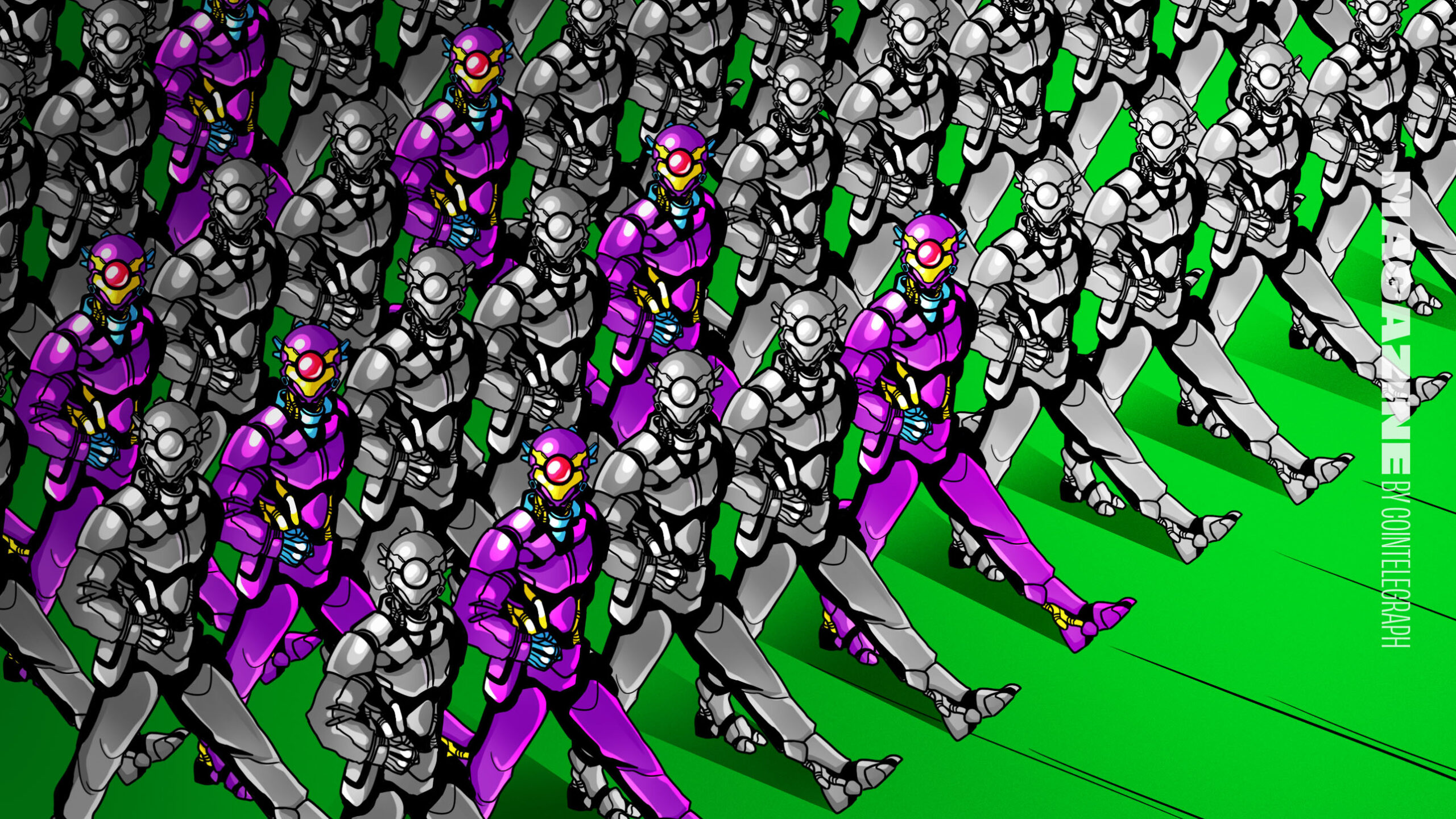
 CryptoCurrency5 hours ago
CryptoCurrency5 hours agoAI drone ‘hellscape’ plan for Taiwan, LLMs too dumb to destroy humanity: AI Eye







You must be logged in to post a comment Login